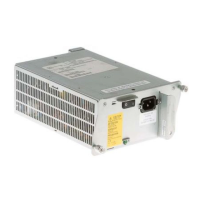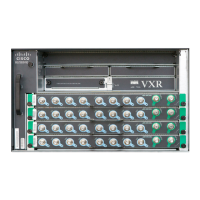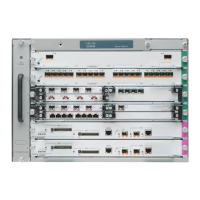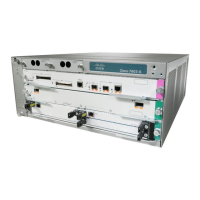Send document comments to nexus7k-docfeedback@cisco.com
5-18
Cisco Nexus 7000 Series NX-OS Interfaces Configuration Guide, Release 5.x
OL-23435-03
Chapter 5 Configuring Bidirectional Forwarding Detection
Configuring BFD
Configuring BFD on OSPF
You can configure BFD for the Open Shortest Path First version 2 (OSPFv2).
BEFORE YOU BEGIN
Ensure that you are in the correct VDC (or use the switchto vdc command).
Enable the BFD feature. See the “Enabling the BFD Feature” section on page 5-7.
Configure the BFD session parameters. See the “Configuring Global BFD Parameters” section on
page 5-8 or the “Configuring BFD on an Interface” section on page 5-9.
Enable the OSPF feature. See the Cisco Nexus 7000 Series NX-OS Unicast Routing Configuration Guide,
Release 5.x, for more information.
SUMMARY STEPS
1. configure terminal
2. router ospf instance-tag
3. bfd
4. interface int-if
5. (Optional) if ospf bfd
6. (Optional) show ip ospf [vrf vrf-name] [interface if]
7. (Optional) copy running-config startup-config
DETAILED STEPS
Command Purpose
Step 1
configure terminal
Example:
switch# configure terminal
switch(config)#
Enters configuration mode.
Step 2
router ospf instance-tag
Example:
switch(config)# router ospf 201
switch(config-router)#
Creates a new OSPFv2 instance with the configured
instance tag. The instance tag can be any
case-sensitive, alphanumeric string up to 20
characters.
Step 3
bfd
Example:
switch(config-router)# bfd
(Optional) Enables BFD for all OSPFv2 interfaces.
Step 4
interface int-if
Example:
switch(config-router)# interface
ethernet 2/1
switch(config-if)#
Enters interface configuration mode. Use the ?
keyword to display the supported interfaces.
Step 5
ip ospf bfd
Example:
switch(config-if)# ip ospf 201 bfd
(Optional) Enables or disables BFD on an OSPFv2
interface. The default is disabled.
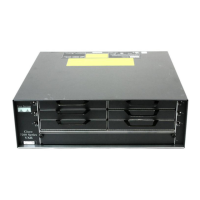
